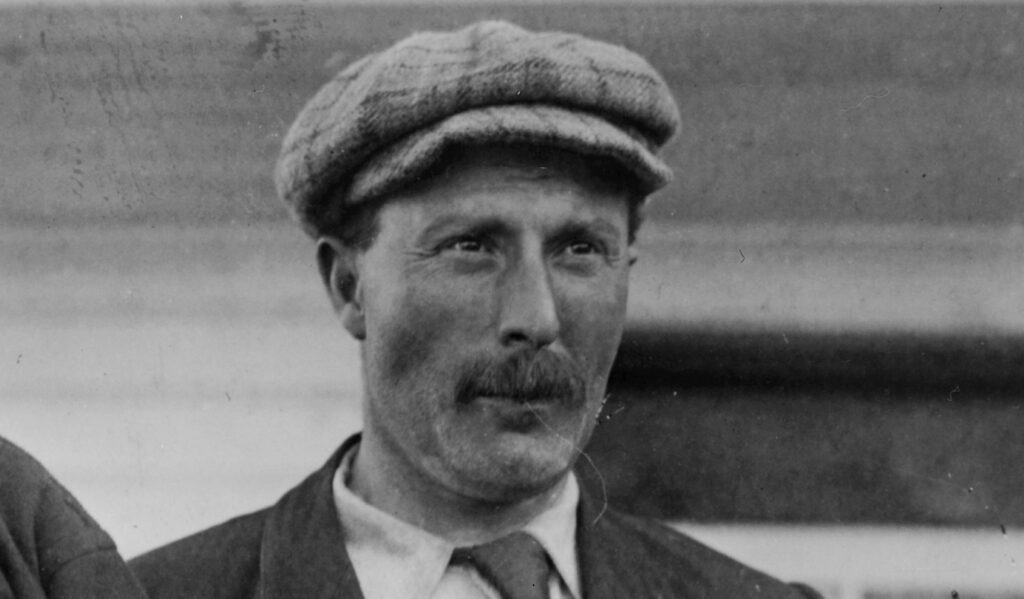Once a month here on the Molten Sulfur Blog, I run content taken from our book Archive: Historical People, Places, and Events for RPGs. This post is one of eighty entries in Archive, each more gameable than the last!
This post is brought to you by beloved Patreon backer Justin Moor. Thanks for helping keep the lights on! If you want to help keep this blog going alongside Justin, head over to the Patreon page – and thank you!

Bob Bartlett
Master Mariner
Captain Bob Bartlett is considered the greatest ice captain of 20th century Arctic exploration. He spent his life pursuing high adventure and fresh discoveries in some of the remotest corners of the world. Bartlett skippered many of the most famous, dangerous, and controversial exploratory expeditions to the Arctic. And he would almost always return with photographs, film reels, and scientific data that greatly contributed to the world’s understanding of the region.
Robert A. Bartlett was born in 1875 in Brigus, Newfoundland. Bartlett’s ancestors had sailed in the cod and seal fisheries for generations. His mother hoped he would become a minister, so when he was sixteen, she sent him to the Methodist College in St. John’s. Bartlett, however, had a passion for the sea. He dropped out of school when he was seventeen to work aboard the merchant vessel Corisande. He spent the next six years aboard merchant vessels and fishing and sealing vessels when the seasons were right. By the time he was 22, he had already visited Latin America, Europe, the Caribbean, and the Mediterranean. At age 23, Bartlett got his captain’s license. Instead of skippering his own ship, though, Bartlett accepted an offer from his uncle to work aboard the Windward, the main vessel of explorer Robert Peary’s expedition to the North Pole. Bartlett was his uncle’s first mate aboard the ship.
The next 10 years of Bartlett’s life were consumed by three separate attempts to reach the North Pole, first aboard the Windward as first mate beside his uncle, and then twice as captain of the steel-hulled Roosevelt. Storms, supply shortages, and injuries ended the first two expeditions. Peary even lost eight toes to frostbite during the first one. Peary, Bartlett, and other expedition members were undaunted by these setbacks and departed from New York for the third voyage in 1908. Favorable weather assisted them, and by the end of March, they were within 150 miles of the North Pole. On April 1st, Bartlett was devastated when Peary ordered him to return south. He expected to join Peary’s crew on the final leg of the journey, but was sent back. This decision led skeptics to criticize Peary’s claim of reaching the North Pole on April 6th, as a navigator like Bartlett would have been able to verify the claim. Bartlett was a defender of Peary, though, even if he wasn’t there.
Bartlett’s next famous adventure started in the summer of 1913, as he returned to the Arctic as the captain of the Karluk, flagship of the Canadian Arctic Expedition. The mission was to take a crew of scientists to Herschel Island, where they would search for new land and survey the region’s flora, fauna, and mineral deposits. The ship, however, became trapped in sea ice, leaving the captain and crew helpless as she drifted for five months. Bartlett suspected the ship would eventually succumb to the ice and sink, so he ordered the crew to build igloos on the ice and transfer most of the ship’s supplies to the floes. Weeks after this order, the ice punched a hole in the Karluk’s side, and she sank. The expedition was well-equipped and had months’ worth of food and fuel. Bartlett wanted to remain at camp until the long Arctic night ended in February, but four men in the group disagreed and decided to press south on their own. They were never heard from again. In February, Bartlett and the remaining crew left camp as planned and reached an uninhabited island in early March. From there, Bartlett and one other crewman made a perilous 700-mile sledge journey to the Bering Strait. They reached Alaska in late May. Bartlett informed officials of his stranded crew, and by early September, eight months after the Karluk sank, all survivors were rescued.
Bartlett had many other journeys besides these famed ones. He was shipwrecked at least 12 times, yet survived them all. By the time of his death in 1946, he was celebrated as a national hero for his travels and contributions to science. He left behind logs expressing the hardships of seafaring life, but in his log he claimed that if he were to do it all over again, he’d be a sailor just the same. Bartlett found nothing so satisfying as the sea.
Bob Bartlett in Play
An NPC like Captain Bartlett would be an interesting one for your party to travel with. He could lead your PCs on Arctic expeditions where they might get stranded and be forced to survive in uniquely harsh conditions. Bartlett would be a great aid for a party with few survival skills. He also aided scientists, so he could be the only captain experienced enough to take the party someplace dangerous, but important for research. And Bartlett’s supply of entertaining stories is likely to make him a party favorite. An NPC like Bartlett would always have a tale at the ready about some exotic port he’d visited, some discovery he’d made, or some perilous adventure he’d narrowly survived. Overall, an NPC like Captain Bartlett would make a great supporting character in a treacherous campaign.






